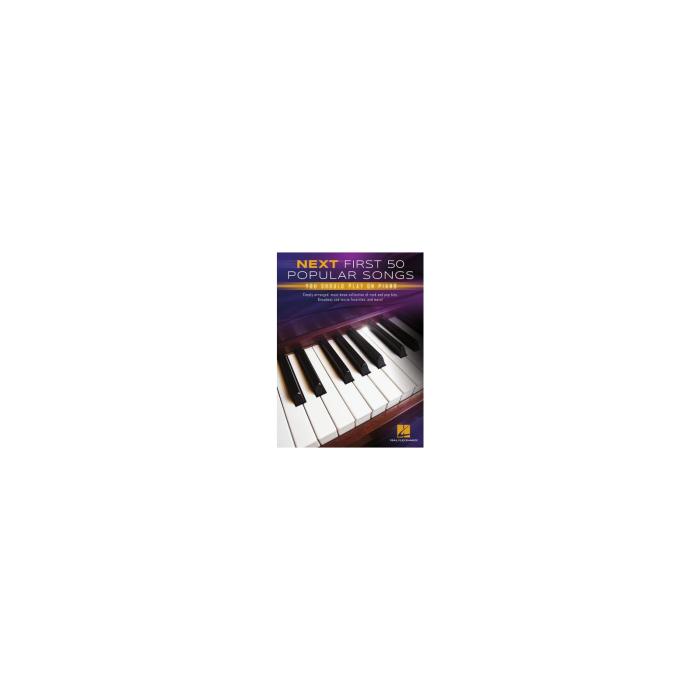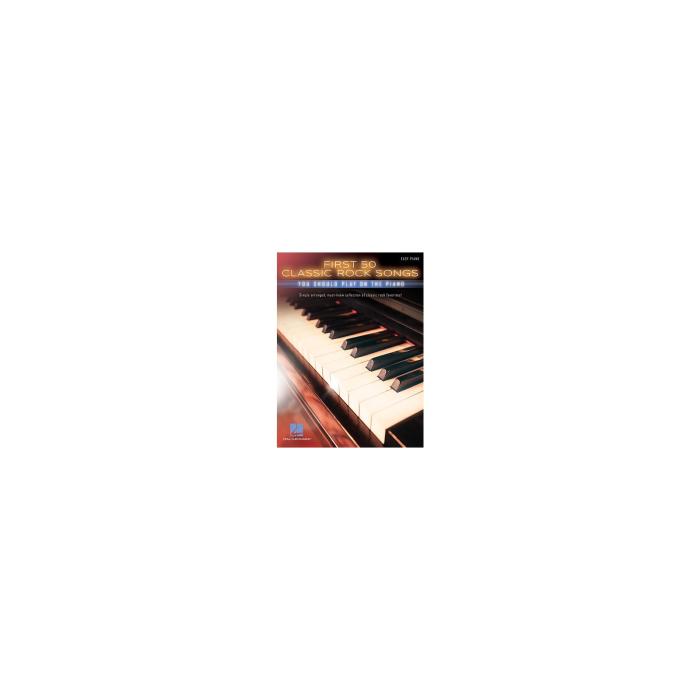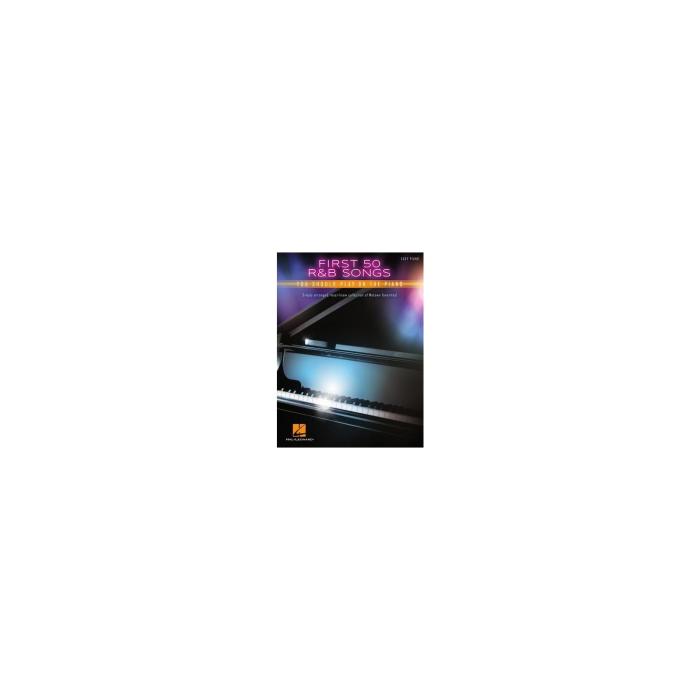Ever dreamed of rocking out to your favorite tunes on the piano? From timeless classics to modern bangers, this guide will unlock the keys to playing 50 of the most iconic songs ever written. Get ready to unleash your inner piano virtuoso and impress your friends with your newfound musical skills!
We’ll dive into the heart of these legendary melodies, breaking down the chords, melodies, and rhythms that make them so captivating. Whether you’re a seasoned player or just starting out, this list has something for everyone. So grab your favorite keyboard, put on your headphones, and let’s embark on a musical journey you won’t forget!
The All-Time Classics

These timeless piano melodies have captured hearts and inspired generations of musicians. From the soaring grandeur of classical masterpieces to the infectious energy of pop anthems, these songs have become synonymous with the piano’s enduring appeal.
The Enduring Appeal of Piano Classics
These piano classics have transcended time and cultural boundaries, resonating with listeners across generations. Their enduring appeal stems from a combination of factors:
- Emotional Resonance:These songs often evoke strong emotions, ranging from joy and nostalgia to sadness and longing. The piano’s expressive range allows musicians to convey these emotions with great depth and authenticity.
- Technical Virtuosity:Many piano classics demand a high level of technical skill, showcasing the instrument’s impressive range and versatility. The intricate melodies, complex harmonies, and demanding rhythms challenge musicians to push their abilities.
- Cultural Significance:These songs often reflect important cultural moments and societal values. They serve as a soundtrack to our collective memory, evoking shared experiences and emotions.
The Top 10 Most Popular Piano Songs of All Time
These ten piano classics have earned their place in the musical canon, capturing the hearts and imaginations of listeners worldwide.
- “Clair de Lune” by Claude Debussy (1905): This evocative piece, part of Debussy’s “Suite Bergamasque,” has become synonymous with romance and ethereal beauty. Its gentle melody and shimmering harmonies evoke the soft glow of moonlight, capturing the essence of a dreamy, introspective mood.
- “Für Elise” by Ludwig van Beethoven (1810): One of the most recognizable piano pieces ever written, “Für Elise” is known for its simple yet elegant melody. While its exact dedication remains a mystery, its popularity has made it a beloved classic, often used in film and television soundtracks.
- “Moonlight Sonata” by Ludwig van Beethoven (1801): This dramatic sonata, particularly its first movement, is a staple of the classical repertoire. Its haunting melody and somber tone evoke a sense of mystery and intrigue, reflecting Beethoven’s personal struggles and artistic brilliance.
- “Gymnopédie No. 1” by Erik Satie (1888): This minimalist piece, with its simple melody and haunting harmonies, has become a modern classic. Its melancholic mood and understated beauty have made it a popular choice for film scores and ambient music.
- “Canon in D Major” by Johann Pachelbel (1680): Originally written for organ, Pachelbel’s “Canon in D Major” has become a popular piano piece, particularly its famous descending bass line. Its graceful melody and timeless harmonies make it a versatile piece, often used in weddings and other celebratory occasions.
- “The Entertainer” by Scott Joplin (1899): This ragtime classic, with its infectious syncopated rhythms and playful melody, is a cornerstone of American music. Its lively energy and upbeat tempo have made it a popular choice for dance music and film soundtracks.
- “Hallelujah” by Leonard Cohen (1984): Cohen’s “Hallelujah” has become a modern hymn, its powerful lyrics and haunting melody resonating with listeners across generations. Its versatility has made it a popular choice for a variety of settings, from church services to concerts to film soundtracks.
- “Imagine” by John Lennon (1971): Lennon’s “Imagine” is a powerful anthem of peace and unity, its simple yet profound lyrics and soaring melody inspiring listeners worldwide. Its message of hope and its timeless appeal have made it a cornerstone of the popular music canon.
- “Bohemian Rhapsody” by Queen (1975): This epic rock opera, with its complex harmonies, soaring vocals, and dramatic changes in tempo, has become a beloved classic. Its intricate piano arrangements, particularly Freddie Mercury’s signature piano riffs, showcase the instrument’s versatility and power.
- “Piano Man” by Billy Joel (1973): Joel’s “Piano Man” is a poignant and relatable ballad, its simple yet effective melody and heartfelt lyrics resonating with listeners who have ever felt lost or alone. Its iconic piano intro and its storytelling nature have made it a popular choice for karaoke and live performances.
Modern Hits You Can Play

Modern pop music is a treasure trove of catchy melodies and engaging rhythms that translate beautifully to the piano. With a little practice, you can learn to play some of your favorite songs and impress your friends with your musical skills.
Modern Pop Songs Suitable for Piano Arrangements
Here’s a list of 20 modern pop songs that are well-suited for piano arrangements, highlighting the key musical elements that make them engaging to play:
- “Bad Guy” by Billie Eilish:This song features a distinctive, minimalist piano melody with a haunting, minor key feel. The chord progression is simple but effective, creating a sense of tension and release. The rhythm is also memorable, with a syncopated beat that’s easy to follow.
- “Someone Like You” by Adele:This emotional ballad features a powerful piano melody that showcases Adele’s impressive vocal range. The chord progression is rich and expressive, with a mix of major and minor chords that convey the song’s bittersweet message. The rhythm is steady and deliberate, providing a solid foundation for the melody.
- “Rolling in the Deep” by Adele:This powerful anthem features a driving piano melody that’s both catchy and complex. The chord progression is dynamic and unpredictable, with a mix of major and minor chords that build tension and release. The rhythm is energetic and infectious, making it a joy to play.
- “Happy” by Pharrell Williams:This upbeat and optimistic song features a simple but memorable piano melody that’s easy to play. The chord progression is bright and cheerful, with a mix of major chords that create a positive vibe. The rhythm is infectious and bouncy, making it a fun song to play.
- “Shape of You” by Ed Sheeran:This catchy pop song features a distinctive piano melody that’s both simple and memorable. The chord progression is straightforward but effective, with a mix of major and minor chords that create a sense of anticipation. The rhythm is infectious and danceable, making it a great song to play for a party.
- “Perfect” by Ed Sheeran:This romantic ballad features a beautiful piano melody that’s both heartfelt and uplifting. The chord progression is rich and expressive, with a mix of major and minor chords that convey the song’s emotional depth. The rhythm is steady and deliberate, providing a solid foundation for the melody.
- “Let Her Go” by Passenger:This melancholic ballad features a simple but effective piano melody that’s both haunting and memorable. The chord progression is straightforward but effective, with a mix of major and minor chords that convey the song’s sense of loss. The rhythm is steady and deliberate, providing a solid foundation for the melody.
So you’re ready to rock those keys and play all the hits, right? But sometimes, even the most awesome tunes can feel a little stressful to learn. If you’re feeling overwhelmed, check out Ethereal Gothic A Coloring Book For Adults A Coloring Book For Adults Gothic Creepy Haunting Beautiful Illustrations To Color To Provide Stress Relief for some seriously chill vibes.
After you’ve colored your way to zen, you’ll be back to conquering those piano scales in no time!
- “Thinking Out Loud” by Ed Sheeran:This romantic ballad features a beautiful piano melody that’s both heartfelt and uplifting. The chord progression is rich and expressive, with a mix of major and minor chords that convey the song’s emotional depth. The rhythm is steady and deliberate, providing a solid foundation for the melody.
Want to rock out on the keys like a total legend? Check out this killer list of the first 50 popular songs you should play on piano! It’s got everything from classic rock anthems to modern pop bangers, and you can Download And Listen Here to get your practice session going.
So grab your instrument, hit those keys, and let’s get this musical party started!
- “Stay With Me” by Sam Smith:This soulful ballad features a powerful piano melody that showcases Sam Smith’s impressive vocal range. The chord progression is rich and expressive, with a mix of major and minor chords that convey the song’s bittersweet message. The rhythm is steady and deliberate, providing a solid foundation for the melody.
- “I’m Yours” by Jason Mraz:This upbeat and optimistic song features a simple but memorable piano melody that’s easy to play. The chord progression is bright and cheerful, with a mix of major chords that create a positive vibe. The rhythm is infectious and bouncy, making it a fun song to play.
- “Blank Space” by Taylor Swift:This playful pop song features a catchy piano melody that’s both memorable and easy to play. The chord progression is straightforward but effective, with a mix of major and minor chords that create a sense of anticipation. The rhythm is infectious and danceable, making it a great song to play for a party.
So, you wanna rock the piano with some killer tunes? “First 50 Popular Songs You Should Play On Piano” is your jam, but hey, maybe you wanna level up your photo game too? Check out The Affinity Photo Manual 2.0 A Step-by-Step New User’s Workbook for some serious photo editing skills.
Once you’ve got your photos looking fire, you can use them to make some epic music videos of your piano skills!
- “Shake It Off” by Taylor Swift:This upbeat and empowering song features a driving piano melody that’s both catchy and complex. The chord progression is dynamic and unpredictable, with a mix of major and minor chords that build tension and release. The rhythm is energetic and infectious, making it a joy to play.
- “Love Story” by Taylor Swift:This romantic ballad features a beautiful piano melody that’s both heartfelt and uplifting. The chord progression is rich and expressive, with a mix of major and minor chords that convey the song’s emotional depth. The rhythm is steady and deliberate, providing a solid foundation for the melody.
- “Roar” by Katy Perry:This empowering anthem features a powerful piano melody that’s both catchy and complex. The chord progression is dynamic and unpredictable, with a mix of major and minor chords that build tension and release. The rhythm is energetic and infectious, making it a joy to play.
- “Firework” by Katy Perry:This uplifting pop song features a simple but memorable piano melody that’s easy to play. The chord progression is bright and cheerful, with a mix of major chords that create a positive vibe. The rhythm is infectious and bouncy, making it a fun song to play.
- “Teenage Dream” by Katy Perry:This catchy pop song features a distinctive piano melody that’s both simple and memorable. The chord progression is straightforward but effective, with a mix of major and minor chords that create a sense of anticipation. The rhythm is infectious and danceable, making it a great song to play for a party.
- “Uptown Funk” by Mark Ronson ft. Bruno Mars:This funky pop song features a driving piano melody that’s both catchy and complex. The chord progression is dynamic and unpredictable, with a mix of major and minor chords that build tension and release. The rhythm is energetic and infectious, making it a joy to play.
- “Can’t Stop the Feeling!” by Justin Timberlake:This upbeat and optimistic song features a simple but memorable piano melody that’s easy to play. The chord progression is bright and cheerful, with a mix of major chords that create a positive vibe. The rhythm is infectious and bouncy, making it a fun song to play.
So, you wanna learn to play the piano and rock out to all the hits? There are tons of cool songs out there, but maybe you want to start with the classics, you know, the ones that everyone knows and loves.
You can find some awesome lists like “First 50 Popular Songs You Should Play On Piano,” but you know what else is a classic? “Narrative of the Life of Frederick Douglass (Dover Thrift Editions Black History)” Narrative of the Life of Frederick Douglass (Dover Thrift Editions Black History) is a powerful story that everyone should read, and it’s totally inspiring.
But hey, back to those piano skills, if you can learn those popular songs, you’ll be the life of the party!
- “7 Rings” by Ariana Grande:This catchy pop song features a distinctive piano melody that’s both simple and memorable. The chord progression is straightforward but effective, with a mix of major and minor chords that create a sense of anticipation. The rhythm is infectious and danceable, making it a great song to play for a party.
- “Thank U, Next” by Ariana Grande:This empowering anthem features a powerful piano melody that’s both catchy and complex. The chord progression is dynamic and unpredictable, with a mix of major and minor chords that build tension and release. The rhythm is energetic and infectious, making it a joy to play.
Piano Arrangement Example: “Bad Guy” by Billie Eilish
Let’s take a closer look at how to adapt “Bad Guy” for a solo piano performance. Here’s a simple arrangement that captures the essence of the original song:
Intro:Play the main piano melody in the left hand, using a simple, repetitive pattern. The right hand can add some arpeggiated chords to create a fuller sound. Verse:Continue playing the main melody in the left hand, adding some rhythmic variations to keep things interesting.
The right hand can play the main melody in a higher octave, adding some embellishments to create a more complex sound. Chorus:Play the main melody in the right hand, adding some rhythmic variations to create a more driving feel.
The left hand can play a simple bass line, using the root notes of the chords in the chorus. Bridge:Play the main melody in the left hand, adding some rhythmic variations to create a more haunting feel. The right hand can play some arpeggiated chords to create a fuller sound.
Outro:Play the main melody in the left hand, fading out gradually. The right hand can add some sustained chords to create a sense of closure.
This is just one possible arrangement, and you can experiment with different approaches to create your own unique interpretation. Remember to focus on the key musical elements of the song, such as the chord progressions, melodies, and rhythms, and use your creativity to adapt them for a solo piano performance.
Exploring Different Genres

The first 50 popular songs you should play on piano cover a wide range of musical genres, each with its own unique characteristics and challenges. This section will delve into four prominent genres – rock, jazz, classical, and country – and explore how their musical elements contribute to their distinctive sounds.
Rock
Rock music is characterized by its powerful and energetic rhythms, often driven by electric guitars, drums, and bass. Rock songs typically feature strong melodies, often with a focus on vocals. The music often expresses themes of rebellion, freedom, and social commentary.
Here are two examples of rock songs:
- “Bohemian Rhapsody” by Queen: This epic song showcases a blend of rock elements, including hard-hitting guitar riffs, soaring vocals, and a complex structure. The song’s dynamic shifts and theatrical elements contribute to its iconic status.
- “Stairway to Heaven” by Led Zeppelin: This classic rock ballad features a haunting melody, intricate guitar work, and a gradual build-up that creates a sense of grandeur. The song’s use of dynamics and tempo changes adds to its emotional impact.
Jazz
Jazz music is characterized by improvisation, syncopation, and a focus on swing rhythms. Jazz musicians often use blues scales and harmonies, and they emphasize improvisation and interplay between instruments. Here are two examples of jazz songs:
- “Take Five” by Dave Brubeck: This iconic jazz composition features a unique 5/4 time signature, which creates a complex and intriguing rhythmic feel. The song’s melodic interplay between the piano and saxophone is a hallmark of jazz improvisation.
- “Fly Me to the Moon” by Frank Sinatra: This classic jazz standard showcases the smooth vocals and sophisticated arrangements typical of the genre. The song’s use of chord progressions and melody creates a sophisticated and elegant sound.
Classical
Classical music is characterized by its formal structures, complex harmonies, and use of instruments like the piano, violin, cello, and orchestra. Classical composers often write pieces in specific forms, such as sonatas, concertos, and symphonies.Here are two examples of classical pieces:
- “Für Elise” by Ludwig van Beethoven: This short and charming piano piece is a popular choice for beginner pianists. Its simple melody and straightforward structure make it accessible to a wide audience.
- “Moonlight Sonata” by Ludwig van Beethoven: This dramatic and expressive piano sonata is known for its hauntingly beautiful first movement. Its use of complex harmonies and dynamic shifts creates a powerful and emotional impact.
Country
Country music is characterized by its use of acoustic instruments, such as the guitar, banjo, and fiddle. Country songs often tell stories about rural life, love, and loss. The music typically features a strong emphasis on vocals and storytelling.Here are two examples of country songs:
- “Ring of Fire” by Johnny Nash: This classic country ballad features a haunting melody and a simple but effective chord progression. The song’s lyrics tell a story of heartbreak and longing, which resonates with many listeners.
- “Man! I Feel Like a Woman!” by Shania Twain: This upbeat country song features a catchy melody, a driving rhythm, and a powerful vocal performance. The song’s lyrics celebrate female empowerment and independence.
Technical Challenges and Musical Techniques
The technical challenges and musical techniques required to play songs from different genres vary significantly.
| Genre | Technical Challenges | Musical Techniques |
|---|---|---|
| Rock | – Powerful and precise playing
|
– Use of power chords and pentatonic scales
|
| Jazz | – Improvisation and creativity
|
– Blues scales and harmonies
|
| Classical | – Precision and accuracy
|
– Use of traditional forms and structures
|
| Country | – Use of specific country techniques, such as slide guitar and fingerpicking
|
– Use of acoustic instruments and traditional country instrumentation
|
Final Conclusion

With this list of 50 piano hits, you’ll be equipped with the knowledge and inspiration to tackle any popular song. So, ditch the sheet music, embrace the feeling, and let your fingers fly across the keys. Remember, it’s all about the joy of music and the thrill of bringing your favorite songs to life.
Happy playing!
Key Questions Answered
What if I’m a beginner?
No worries! This guide includes songs for all skill levels. Start with easier tunes and gradually work your way up.
Are there sheet music resources available?
Yes! Many websites and apps offer sheet music for popular songs. A quick online search will lead you to the perfect resources.
Can I learn to play these songs without a teacher?
Absolutely! This guide provides the essential knowledge to get started. But, if you want more in-depth instruction, a piano teacher can be a valuable asset.

